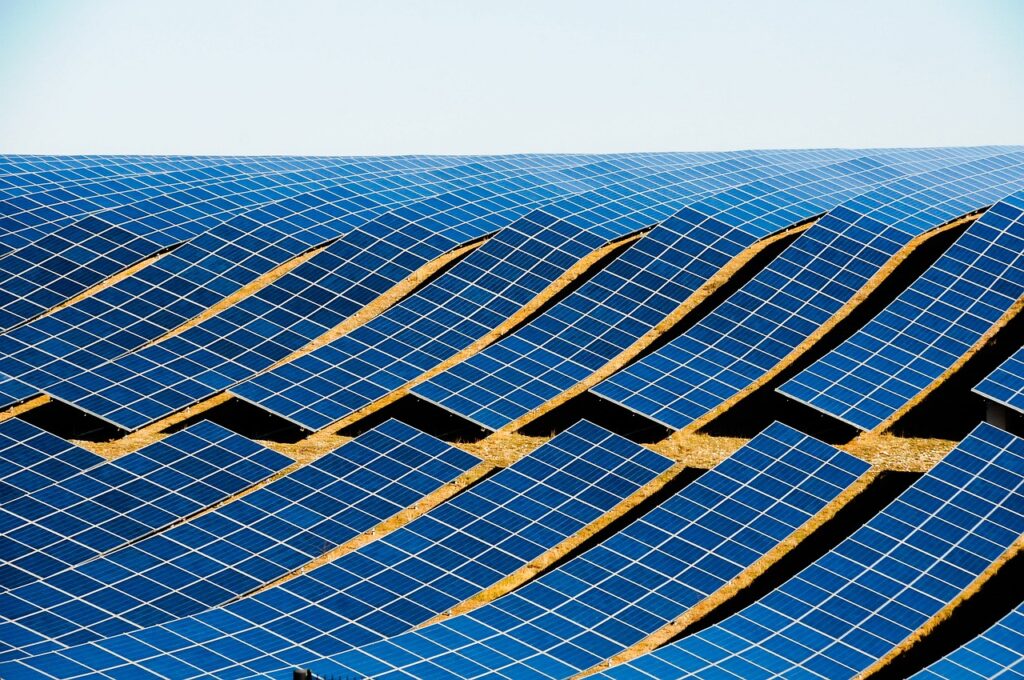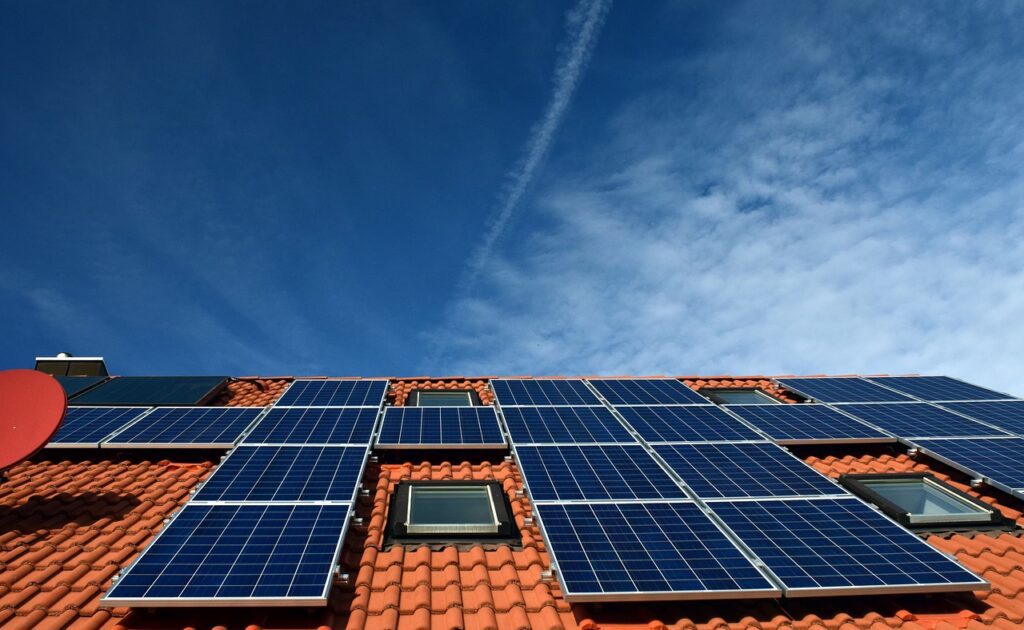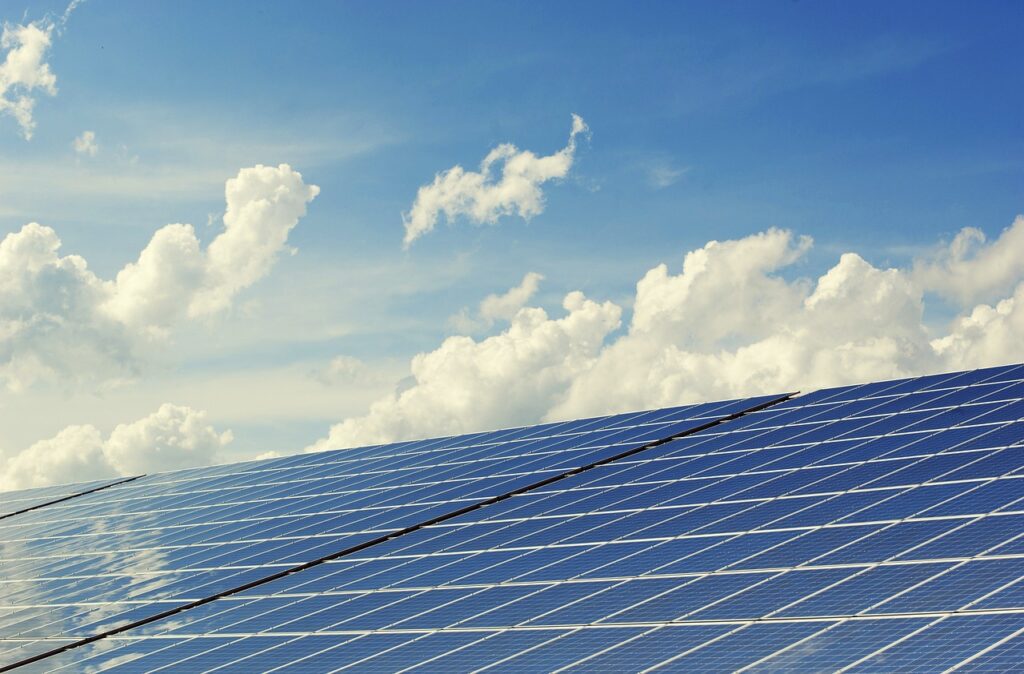10 Powerful Ways Artificial Photosynthesis Creates Sustainable Fuel
Imagine a world where we could harness the power of the sun to create fuel. This isn’t just a dream; it’s becoming a reality with These Types of Photosynthesis. This innovative technology has the potential to revolutionize the way we produce energy, offering a sustainable and environmentally friendly alternative to fossil fuels. In this detailed article, we’ll explore what These Types of Photosynthesis are, how they work, their benefits, challenges, and future prospects.
Table of Contents
What is Artificial Photosynthesis?
These Types of Photosynthesis mimic the natural process by which plants convert sunlight into energy. In natural photosynthesis, plants use sunlight, water, and carbon dioxide to produce glucose and oxygen.

These Types of Photosynthesis, on the other hand, aims to create fuels such as hydrogen or hydrocarbons by capturing sunlight and using it to drive chemical reactions that produce energy-rich compounds. This process holds immense potential for sustainable energy production and reducing our reliance on fossil fuels.
How Does Artificial Photosynthesis Work?

The process of These Types of Photosynthesis involves several key steps:
Capturing Sunlight:
Specialized materials, often semiconductors, absorb sunlight. These materials are designed to efficiently capture light energy and convert it into electrical energy.
Water Splitting:
The absorbed sunlight is used to split water molecules into hydrogen and oxygen. This is achieved through a process called photolysis, where light energy breaks down water molecules.
Fuel Production:
The hydrogen produced can be used directly as a fuel or combined with carbon dioxide to create hydrocarbons. This step often involves catalysts that facilitate the chemical reactions needed to produce these fuels.
Catalysts play a crucial role in these reactions, speeding up the processes and making them more efficient. These catalysts are often made of materials like platinum, which can effectively drive the necessary chemical transformations.
Types of Artificial Photosynthesis
There are different approaches to These Types of Photosynthesis, each with its unique mechanisms:
Photoelectrochemical Systems:
These systems use photoelectrodes to capture sunlight and drive chemical reactions. Photoelectrodes are materials that absorb light and generate an electric current, which is then used to split water molecules or reduce carbon dioxide.
Photocatalytic Systems:
In these systems, catalysts absorb sunlight and facilitate chemical transformations. Photocatalysts are substances that speed up chemical reactions when exposed to light, allowing for the efficient conversion of sunlight into chemical energy.
Hybrid Systems:
These combine elements of both photoelectrochemical and photocatalytic systems to optimize efficiency. Hybrid systems aim to leverage the strengths of both approaches, combining high light absorption with effective catalytic activity.
Key Technologies in Artificial Photosynthesis
Several technologies are integral to the success of These Types of Photosynthesis:
Solar Cells:
These devices capture and convert sunlight into electrical energy. Solar cells are crucial for the initial step of light absorption and energy conversion.
Water Splitting Technologies:
These methods split water molecules to produce hydrogen and oxygen. Efficient water splitting is essential for producing hydrogen, a key fuel in These Types of Photosynthesis.
Carbon Dioxide Reduction:
Techniques that convert CO2 into useful fuels and chemicals. Carbon dioxide reduction is important for producing hydrocarbons and mitigating greenhouse gas emissions.
Advantages of Artificial Photosynthesis

Artificial photosynthesis offers several significant benefits:
Sustainable Fuel Production:
It provides a renewable source of fuel without depleting natural resources. By using sunlight, water, and carbon dioxide, These Types of Photosynthesis can produce fuels in a sustainable manner.
Environmental Benefits:
Reduces greenhouse gas emissions and mitigates climate change. The process captures carbon dioxide from the atmosphere, helping to reduce the overall carbon footprint.
Energy Independence:
Reduces reliance on fossil fuels and enhances energy security. By producing fuels locally from abundant resources, countries can become less dependent on imported fossil fuels.
Challenges and Limitations
Despite its potential, These Types of Photosynthesis faces several challenges:
Technical Hurdles:
Efficiently capturing and converting sunlight is still a significant challenge. Developing materials and systems that can effectively harness solar energy remains a key focus of research.
Economic Factors:
The cost of developing and scaling up the technology is high. Making these types of photosynthesis economically viable requires significant investment and innovation.
Environmental Concerns:
The long-term impacts on ecosystems need careful consideration. Ensuring that the materials and processes used in artificial photosynthesis are environmentally friendly is essential.
Recent Advances and Innovations
Recent years have seen exciting developments in artificial photosynthesis:
Breakthrough Research:
Advances in materials science have led to more efficient catalysts and solar capture methods. Researchers are continually discovering new materials that can improve the efficiency and effectiveness of these types of photosynthesis systems.
Notable Projects and Collaborations:
International collaborations are driving progress and innovation in this field. Joint efforts between universities, research institutions, and industry are accelerating the development and implementation of these types of photosynthesis technologies.
Applications of Artificial Photosynthesis

The potential applications of these types of photosynthesis are vast:
Renewable Energy:
Providing a sustainable source of hydrogen and hydrocarbons. these types of photosynthesis can play a critical role in the transition to renewable energy sources.
Industrial Processes:
Reducing carbon emissions in manufacturing and chemical production. By providing a clean source of energy, these types of photosynthesis can help industries reduce their environmental impact.
Environmental Remediation:
Capturing and converting CO2 to reduce atmospheric greenhouse gases. These types of photosynthesis can contribute to efforts to combat climate change by removing carbon dioxide from the atmosphere.
Future Prospects
The future of artificial photosynthesis is bright:
Potential Impact on Global Energy Systems:
Could revolutionize energy production and consumption worldwide. As the technology matures, it has the potential to transform how we generate and use energy.
Ongoing Research and Development:
Continued innovation is critical to overcoming current challenges and unlocking its full potential. Researchers are exploring new materials, processes, and systems to make these types of photosynthesis more efficient and cost-effective.
How to Support Artificial Photosynthesis Research
Supporting the advancement of these types of photosynthesis is crucial:
Policy Recommendations:
Governments can provide funding and create favorable policies. Supportive policies can accelerate the development and adoption of artificial photosynthesis technologies.
Investment Opportunities:
Businesses and investors can support research and commercialization. Investing in these types of photosynthesis can provide significant returns as the technology becomes more widespread.
Public Awareness and Education:
Increasing awareness can drive public support and funding. Educating the public about the benefits of artificial photosynthesis can help build momentum for its adoption.
Environmental Impact of Artificial Photosynthesis
Reducing Carbon Footprint
Artificial photosynthesis has the potential to significantly reduce our carbon footprint. By converting carbon dioxide into useful fuels, this technology can help mitigate the effects of climate change. This process not only utilizes a greenhouse gas but also produces clean energy, making it a double-edged sword against environmental degradation.
Minimizing Pollution
Traditional fossil fuel combustion releases harmful pollutants into the atmosphere, contributing to air and water pollution. In contrast, fuels produced through artificial photosynthesis burn cleaner, resulting in fewer pollutants. This could lead to improved air quality and healthier ecosystems, particularly in urban areas plagued by smog and industrial emissions.
Economic Benefits
Job Creation
The development and deployment of artificial photosynthesis technology can create numerous job opportunities. From research and development to manufacturing and maintenance, this burgeoning field has the potential to boost employment in various sectors. As the technology scales up, it will require a skilled workforce, providing new career paths in green technology and renewable energy.
Energy Security
Artificial photosynthesis can contribute to energy security by diversifying the energy supply. Unlike fossil fuels, which are concentrated in specific regions, the raw materials for artificial photosynthesis—sunlight, water, and carbon dioxide—are widely available. This can reduce dependency on imported fuels and enhance national energy independence.
Technological Innovations
Nanotechnology in Artificial Photosynthesis
Nanotechnology plays a crucial role in enhancing the efficiency of artificial photosynthesis. By using nanomaterials, researchers can create more effective catalysts and improve light absorption. These advancements make the process more efficient and closer to commercial viability, paving the way for large-scale adoption.
Integration with Existing Infrastructure
One of the promising aspects of artificial photosynthesis is its potential integration with existing energy infrastructure. For example, solar fuel produced through this method can be used in conventional internal combustion engines with minimal modifications. This seamless integration can accelerate the transition to renewable energy sources without requiring a complete overhaul of current systems.
Educational and Research Opportunities
Interdisciplinary Research
Artificial photosynthesis is a multidisciplinary field that brings together experts from chemistry, physics, biology, and engineering. This convergence fosters innovative approaches and solutions, pushing the boundaries of what’s possible in renewable energy. Educational institutions can leverage this trend by developing specialized programs and fostering collaboration among various departments.
Public Awareness and Education
Raising public awareness about artificial photosynthesis is crucial for its adoption. Educational campaigns can inform people about the benefits and potential of this technology, garnering support from the community and policymakers. This can lead to increased funding for research and faster implementation of artificial photosynthesis projects.
Global Impact
Addressing Energy Poverty
Artificial photosynthesis can play a significant role in addressing energy poverty, particularly in developing regions. By harnessing local resources like sunlight and water, communities can produce their own clean energy, reducing reliance on expensive and often inaccessible fossil fuels. This can improve living standards and support economic development in underserved areas.
International Collaboration
The development and implementation of artificial photosynthesis require international collaboration. Sharing knowledge, resources, and technology across borders can accelerate progress and ensure that the benefits of this technology are globally distributed. Collaborative efforts can also address common challenges, such as scaling up production and reducing costs.
Health Benefits of Cleaner Energy
Improving Public Health
The transition to fuels produced by artificial photosynthesis can lead to significant public health benefits. Reduced emissions from cleaner-burning fuels can decrease the incidence of respiratory and cardiovascular diseases caused by air pollution. This shift can lower healthcare costs and improve the overall quality of life in densely populated areas.
Reduction of Water Contamination
Fossil fuel extraction and combustion processes often lead to water contamination, affecting both ecosystems and human health. Artificial photosynthesis eliminates the need for such processes, thereby reducing the risk of water pollution and safeguarding aquatic life and drinking water sources.
Policy and Regulatory Framework
Government Incentives
Government policies play a crucial role in the development and adoption of new technologies. Incentives such as tax breaks, subsidies, and grants for research and development can accelerate the advancement of artificial photosynthesis. These measures can make it financially viable for companies to invest in this technology.
Regulatory Standards
Establishing clear regulatory standards for artificial photosynthesis can ensure safety and efficacy while promoting innovation. Regulations can also help in setting benchmarks for environmental impact, guiding the technology’s development towards sustainable and eco-friendly practices.
Ethical and Social Considerations
Equitable Access to Technology
Ensuring that the benefits of artificial photosynthesis are accessible to all, especially marginalized communities, is an important ethical consideration. Policies and programs should be designed to provide equitable access to clean energy, preventing the technology from becoming another source of disparity.
Public Engagement and Trust
Building public trust through transparency and engagement is essential for the acceptance of artificial photosynthesis. Involving communities in the development process, addressing concerns, and providing clear, factual information can foster trust and support for the technology.
Commercialization and Market Potential
Scaling Up Production
Scaling up the production of artificial photosynthesis technologies to meet global energy demands is a significant challenge. This involves developing efficient manufacturing processes and infrastructure, as well as ensuring a steady supply of necessary materials.
Market Adoption
Understanding market dynamics and consumer behavior is crucial for the successful commercialization of artificial photosynthesis. Strategies to encourage market adoption include competitive pricing, demonstrating cost-effectiveness, and showcasing the environmental benefits of the technology.
Synergies with Other Renewable Technologies
Hybrid Energy Systems
Integrating artificial photosynthesis with other renewable energy sources, such as solar and wind, can create hybrid systems that optimize energy production and storage. These systems can provide more consistent and reliable energy supply, addressing the intermittency issues associated with renewable energy.
Energy Storage Solutions
Artificial photosynthesis can complement existing energy storage technologies, such as batteries and hydrogen fuel cells. By producing fuels that can be easily stored and transported, it offers a solution to the storage challenges faced by other renewable energy sources.
Future Research Directions
Advancements in Catalysts
Developing more efficient and cost-effective catalysts is a key area of research in artificial photosynthesis. Innovations in this field can enhance the overall efficiency of the process, making it more viable for large-scale applications.
Optimization of Reaction Conditions
Research is also focused on optimizing the reaction conditions, such as light intensity and wavelength, to maximize the efficiency of artificial photosynthesis. Understanding these factors can lead to the development of more effective systems.
Case Studies and Pilot Projects
Successful Implementations
Highlighting successful pilot projects and case studies can demonstrate the practical applications and benefits of artificial photosynthesis. These examples can provide valuable insights and lessons for future developments.
Lessons Learned
Analyzing the challenges and successes of early implementations can inform future research and development efforts. Lessons learned from pilot projects can help in overcoming technical and logistical hurdles.
Conclusion
Artificial photosynthesis holds the promise of a cleaner, more sustainable future. By mimicking nature’s processes, we can create renewable fuels and reduce our impact on the planet. As research and technology continue to advance, the dream of harnessing the sun’s power to fuel our world becomes increasingly attainable.
If You have any doubts or queries about this article, Feel Free to Contact Us On Our LinkedIn Page!
FAQs
What is artificial photosynthesis?
Artificial photosynthesis is a process that mimics natural photosynthesis to create fuels from sunlight, water, and carbon dioxide.
How does artificial photosynthesis differ from natural photosynthesis?
While natural photosynthesis produces glucose and oxygen, artificial photosynthesis aims to produce fuels like hydrogen or hydrocarbons.
What are the main applications of artificial photosynthesis?
The main applications include renewable energy production, reducing carbon emissions in industrial processes, and environmental remediation.
What are the current challenges in artificial photosynthesis research?
Challenges include technical difficulties in capturing and converting sunlight efficiently, high economic costs, and potential environmental impacts.
How can individuals support artificial photosynthesis research?
Individuals can support by advocating for favorable policies, investing in related technologies, and spreading awareness about the benefits and importance of artificial photosynthesis.
One Response